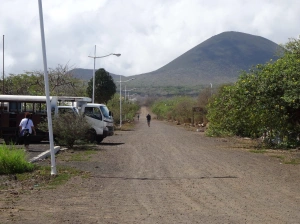Down in the southern end of the Galápagos archipelago is Floreana Island. It’s arguably the only island that people visit to see the human component, rather than the endemic animals.
Floreana has an intriguing history. The first post office on the Galápagos was set up here in the late 1700s by passing whalers – really it was just a barrel that letters were left in. If a sailor was heading in the direction of your letter, then he’d pick it up and hand deliver it. This tradition has continued today and visitors are encouraged to write a letter and leave it in the “post office,” and/or take a letter if you find one addressed to your local city.
In 1832, the Ecuadorians began to colonize the island and briefly turned it into a penal colony, but it failed due to the lack of fresh drinking water – an issue that the island still faces to this day, especially during the dry season.
During the 1920s and 30s, several small groups of European migrants made their way to Floreana Island. There were some successful attempts at homesteading and growing food but unfortunately a string of strange disappearances left indelible marks on the island. In recent years, a book and a movie were made about the events that transpired almost 100 years ago: The Galapagos Affair: Satan Came to Eden.
If you’re interested in diving further into Floreana’s enthralling history, check out the Wittmer Foundation, one of the first families to arrive in the 1930s.
In addition to the human history on Floreana Island, visitors may enjoy a green beach (olivine crystrals) or a white beach (pulverized coral). Further in the island are the highlands of Cerro Alieri and Asilo de la Paz. The latter is known for its pirate caves and for still housing the giant tortoises that were owned by the original settlers.
Floreana Island is sparse and relatively inhospitable compared to its more lush neighbors. However, the history and the unique sites are absolutely worth the visit.





